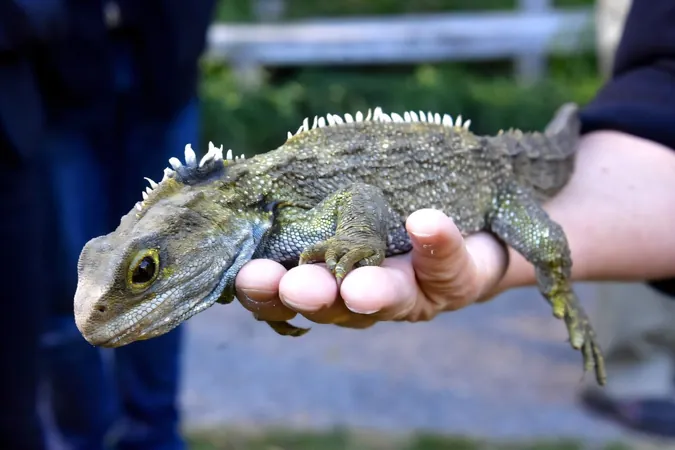
Meet the Tiny Titan: The Oldest Lizard Ancestor Unearthed in England!
2025-09-14
Author: Ming
Ancient Reptile Changes Our Understanding of Lizard Evolution
In an astonishing revelation, scientists have uncovered the oldest known ancestor of modern lizards in the stunning landscapes of southwest England. This minuscule creature, no larger than a human palm, roamed the Earth an incredible 242 million years ago, preying on cockroaches with its surprisingly formidable teeth!
A Jurassic Jewel: The Fossil's Discovery
Found on a fossil-rich beach in Devon back in 2015, the skeletal remains of this ancient reptile have astounded researchers. After years of meticulous study, the remarkable findings were finally published in the journal *Nature*. According to Dan Marke from the University of Bristol, this discovery challenges everything we thought we knew about reptile evolution, especially concerning lizards, snakes, and the unique tuatara.
What Makes This Little Beast Unique?
Unlike modern lizards and snakes, which sport a partially hinged skull and a mouth full of teeth, this ancestor, named Agriodontosaurus helsbypetrae, flaunted a different design. It had spectacularly large teeth proportionate to its size, a distinctive feature it shares with its distant relative, the tuatara—often regarded as a 'living fossil.' This tiny titan employed its impressive teeth to pierce and shear through the tough exoskeletons of its insect prey, much like the tuatara does today.
High-Tech Investigations Illuminate the Past
Studying such a diminutive fossil posed unique challenges; the skull measures a mere 1.5 centimeters across and was embedded in a sizeable rock. To reveal its secrets, researchers turned to the European Synchrotron Radiation Facility, a facility with X-ray technology 100 billion times more powerful than that found in hospitals. This allowed scientists to obtain crystal-clear images of the specimen, unveiling details that would have remained hidden.
The Discovery That Changes Everything
The findings promise to reshape our understanding of reptilian history and evolution. As Marke expressed, "The new fossil shows almost none of what we expected," hinting at the exciting possibilities that lie ahead in paleontological research. This tiny fossil not only sheds light on the distant past but also sparks intrigue for future discoveries regarding our planet's evolutionary journey.



 Brasil (PT)
Brasil (PT)
 Canada (EN)
Canada (EN)
 Chile (ES)
Chile (ES)
 Česko (CS)
Česko (CS)
 대한민국 (KO)
대한민국 (KO)
 España (ES)
España (ES)
 France (FR)
France (FR)
 Hong Kong (EN)
Hong Kong (EN)
 Italia (IT)
Italia (IT)
 日本 (JA)
日本 (JA)
 Magyarország (HU)
Magyarország (HU)
 Norge (NO)
Norge (NO)
 Polska (PL)
Polska (PL)
 Schweiz (DE)
Schweiz (DE)
 Singapore (EN)
Singapore (EN)
 Sverige (SV)
Sverige (SV)
 Suomi (FI)
Suomi (FI)
 Türkiye (TR)
Türkiye (TR)
 الإمارات العربية المتحدة (AR)
الإمارات العربية المتحدة (AR)